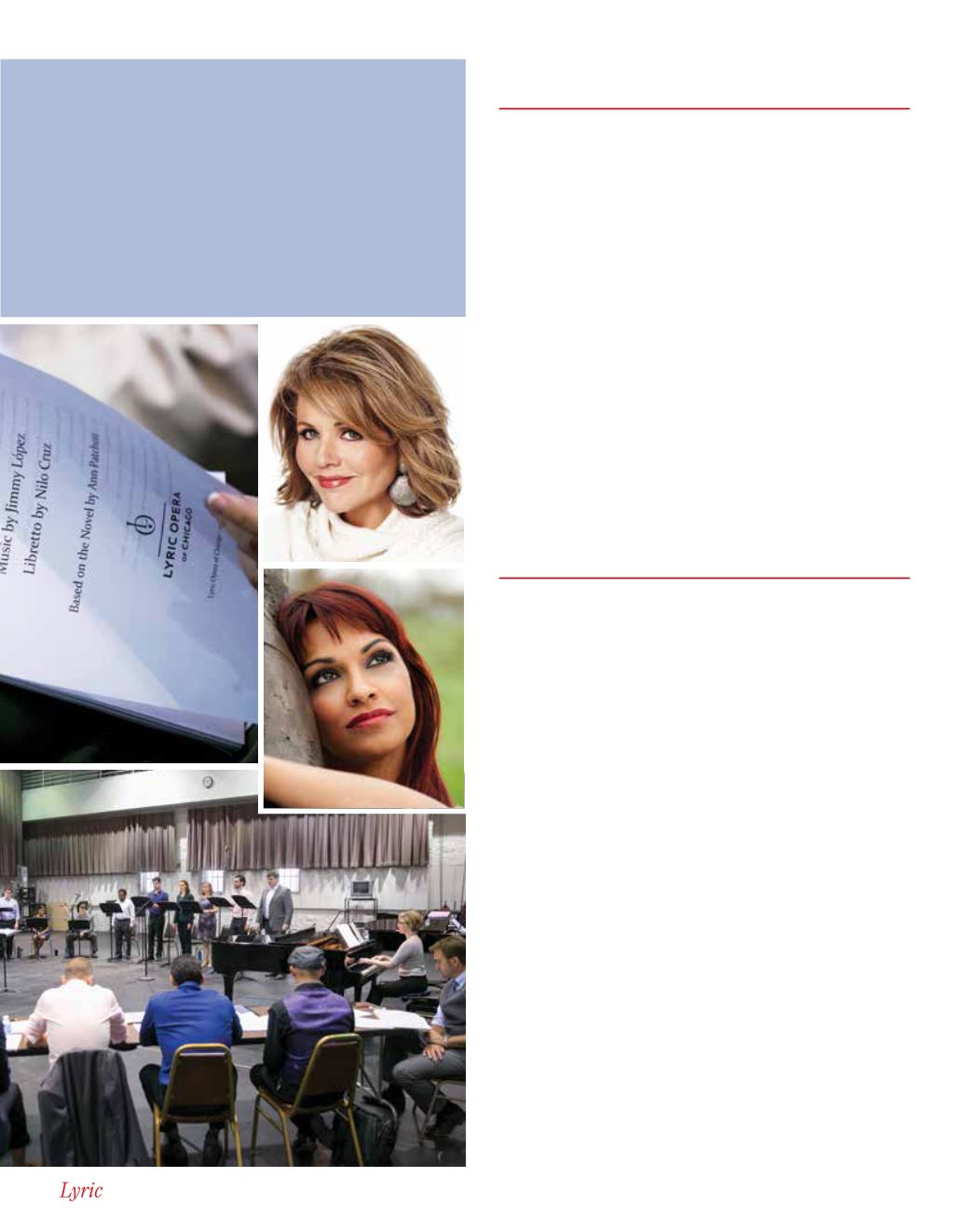

December 7, 2015 - January 17, 2016
|
29
ANTHONY FREUD,
general director
What drew Lyric to
Bel Canto
?
Ann Patchett’s bestselling novel is ideal fare to be turned into
an opera, because underlying it all is the humanizing power of a
beautiful singing voice. The novel takes a society in turmoil and
finds a way of making it almost Utopian in the least likely of
circumstances. Jimmy López and Nilo Cruz have created what
I think is thrilling music theater. There’s something very touch-
ing to me about the fact that the first great opera, Monteverdi’s
Orfeo
, was about the humanizing power of the human voice, and
it’s wonderful that our brand-new opera should have the same
core theme.
What has been most heartening for you in the amazing journey of
developing this work?
It was invigorating to witness the progress Jimmy López and Nilo
Cruz made on this project, and to hear the vision of director
Kevin Newbury for the production. The story of
Bel Canto
hasn’t
simply been set to music – it’s been reinvented so that it has
become something wholly new. The intention was for
Bel Canto
the opera to
be
an opera – and to be viable only as such.
RENÉE FLEMING,
curator
and Lyric creative consultant
What makes commissioned works valuable for a major
opera company?
Without them we’re talking about a museum art form – an art
form that is entirely historic in its presentation. We need that,
of course, but new works are what keep opera alive and make it
relevant to our lives today.
How did you arrive at
Bel Canto
as the dramatic source for this
Lyric commission?
Ann Patchett and I have been friends almost since the book came
out [2001]. Although people believe she based the character of
Roxane Coss on me, we hadn’t met when she was writing it, but
she created a terrific portrait of an American singer. Someone
acquired the film rights (it looks like that may be coming to frui-
tion), but in the meantime I said, “Let’s talk about the opera.”
It’s so obviously right for the lyric stage, this story about an opera
singer in the midst of a hostage crisis, the Utopian society created
through art, and with a strong international and multilingual
element as well.
As curator, how did you begin in searching for the right composer?
I reached out to friends and professionals who are steeped in
new music to begin the research process, but it’s never-ending.
There are so many talented composers. Like singers, composers
have to have online resources so they can be heard. Sometimes
it’s the publishers who create a body of work for exploration, but
often it’s the composers themselves. One can get at least an initial
exposure to their work that way. I decided to focus on American
composers, but then I thought, “What if we focus on South
Edited by Roger Pines
The evolution of
Bel Canto
, revealed
by the team that
made it happen
SVEN ARNSTEIN
DECCA/TIMOTHY WHITE
















